Bert Hinkler, Queensland Aviator and World War I Hero, Honoured in Italy
By JOL Admin | 9 October 2015
Authors: Lynn Meyers and Guest Blogger, Kevin Lindeberg
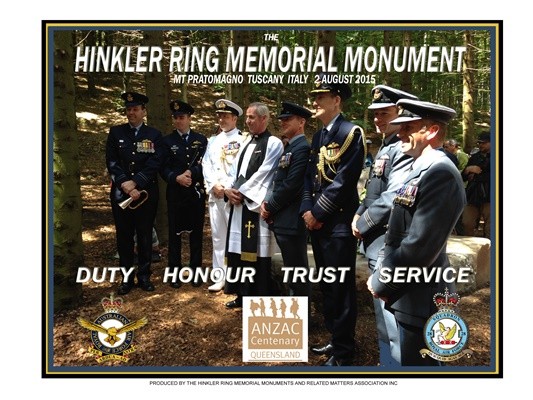
The John Oxley Library has recently received a donation of three posters concerning the official unveiling of a new monument dedicated to the Queensland aviator and World War I hero, Bert Hinkler, at Mt. Pratomagno in Tuscany, Italy. This is the site where Hinkler lost his life on the 7th January 1933 when his plane went down during a solo flight from England to Australia.
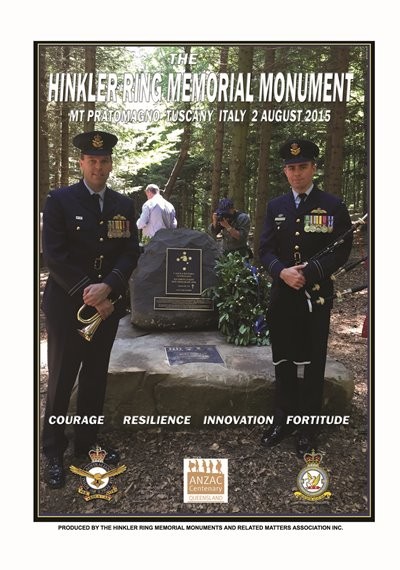
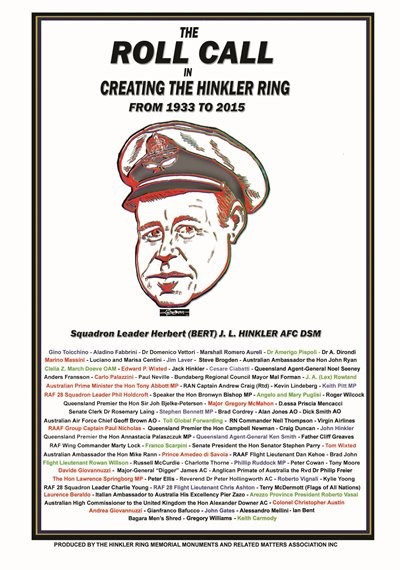
The new monument also marks the location of "The Hinkler Ring" - a circular 8.4 km hiking track for tourists, on Mt Pratomagno. The opening ceremony, held on the 2nd August 2015, brought together the three World War I allies of Great Britain, Italy and Australia, and was an authorised WWI Anzac Centenary Commemorative Special Event.
The organiser was Queenslander, Kevin Lindeberg. Mr Lindeberg is a long-time enthusiast of Bert Hinkler originating from his long friendship with pioneer aviation historian, Edward (Ted) Wixted, the author of “The Last Flight of Bert Hinkler” and other books on this period, including one about Sir Charles Kingsford Smith.
In 1974, after unveiling a monument at Bert Hinkler’s house in Southampton on behalf of the Royal Queensland Aero Club and Queensland Museum (this house since having been relocated to Bundaberg to form a central tourist item at the Hinkler Hall of Aviation), Lindeberg went to Mt Pratomagno to establish conclusively where Hinkler died.
In the company of then President of the Arezzo Aero Club, the Duke of Aosta, Prince Amedeo di Savioa, Lindeberg was taken directly to the site by the man who found Hinkler’s body on the morning of 27 April 1933, Gino Tocchioni. The duke and Lindeberg erected two wooden markers on the crash and death sites. A ceremony was also arranged around September 1974 at which bronze medallions where presented by then Australian Ambassador the Hon John Ryan to the Italian people who found and removed Hinkler’s body and Puss Moth wreckage in 1933, one of whom was Tocchioni.
Some 40 years later, in mid-2014, Lindeberg, being one of only two persons alive to have been shown the site by Tocchioni, was invited to Italy by the Italian Alpine Club Arezzo Branch to retrace his 1974 footsteps and to relocate the actual death site so that it could become a central site of interest in the proposed new “the Hinkler Ring.”
The 2nd August 2015 open-air service was attended by officials and relatives, including Hinkler's great nephew, John William Hinkler. Letters of tribute from the then Australian Prime Minister, Tony Abbott, and Queensland Premier, Annastacia Palaszczuk, were read during the ceremony, and sealed into a time capsule entombed into the new memorial monument’s base for reopening in another 100 years.
The Federal Parliament commissioned a special presentation for this WWI Anzac Commemorative Ceremony, signed by both presiding officers, which recaptured the historic occasion when Hinkler visited Parliament House Canberra on 15 March 1928 and was accorded the unique honour of being invited to sit on the floors of both chambers during question time, an honour and privilege normally only accorded to Heads of State.
The new memorial monument has a strong Queensland connection, being constructed from a 1.4 tonne basalt boulder from Mon Repos Beach near Bundaberg and transported 16,000kms over sea and land to Italy. The boulder was transported at no cost by Toll Global Forwarding as part of its support for this World War I Anzac commemorative project. The time capsule also contained a sealed smaller capsule of sand from Bargara Beach, where Hinkler first learned to fly in his homemade gliders as a teenager in 1911-12.
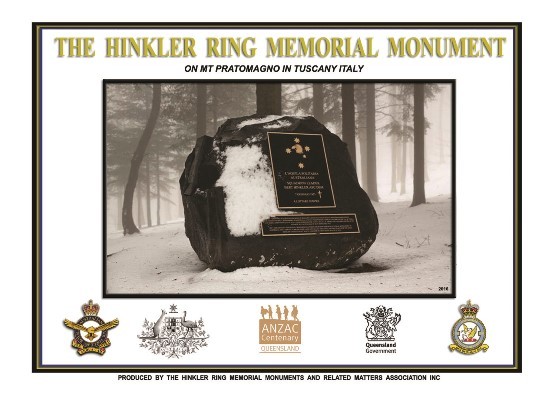
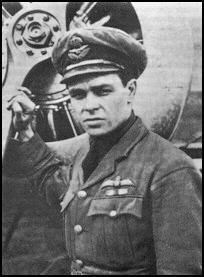
Bert Hinkler during World War I with RAF 28 Squadron. Photograph from the Hinkler House Memorial Museum & Research Association: http://www.hinklerresearch.org.au/life.htm
Hinkler’s old RAF 28 Squadron ordered three of its ranking officers to attend the ceremony from RAF Benson Base in Oxfordshire. The Squadron commissioned a carved basalt rock replica of its crest which was affixed to the Mon Repos Beach boulder. Its motto is “Whatsoever you may do, do.”
Two RAAF officers (a piper and bugler) were ordered to attend by then RAAF Chief of Air, Geoff Brown AO, to perform ceremonial duties at the ceremony. The RAAF Group Captain based at the Australian High Commission in London attended, as did a Royal Navy Commander from the British Embassy in Rome. The memorial monument was officially unveiled by Australia’s Ambassador to Italy, the Hon Mike Rann.
The monument and walking track pay a lasting tribute to Bert Hinkler's magnificent flying achievements, and also to his bravery, heroism and innovative genius during the First World War in which he was awarded the Distinguished Service Order.
Bert Hinkler, affectionately known as the "boy from Bundaberg", served with distinction in the First World War in the British Royal Naval Air Service. To pursue his dream of becoming a qualified pilot Hinkler had sailed for England at the end of 1913 and started work as a mechanic at the Sopwith Aircraft Factory in London. He later flew in the famous Sopwith Camel with 28 Squadron in northern Italy in 1918.
Shortly after the outbreak of war in 1914 he enlisted in the Royal Naval Air Service and was posted initially to Newcastle-upon- Tyne and in early 1915 to Whitley Bay in Northumberland. As a crack rifle shot he served as an observer/air gunner in night and day bombing raids over France and Belgium, privately claiming the destruction of six enemy planes. In 1917 he was awarded the Distinguished Service Order for his bravery, promoted to warrant rank and recommended for a commission and pilot training. Hinkler realized his dream and graduated as a pilot in July 1918, being posted to No. 28 Squadron, Royal Air Force stationed in Italy in the aftermath of the famous Battle of Caporetto which saw the combined forces of the German and Austro-Hungarian Empires inflict a massive defeat on Italy.
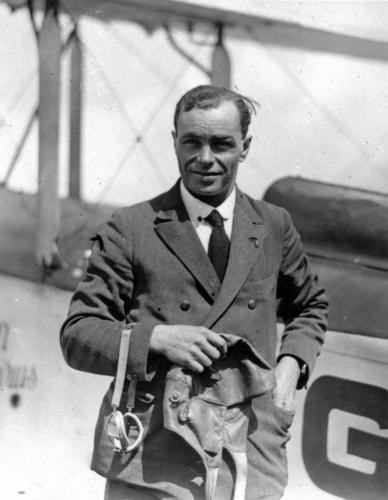
Bert Hinkler. John Oxley Library, Negative No. 16290
In addition to his valour in the air, Hinkler was also a talented mathematician and inventor, designing various aviation instruments which were in use up until the Second World War. For example he invented an improved dual-control system for planes so that the gunner could take control if the pilot was killed or disabled. He also invented a machine gun adaptor for air gunners so that when a plane flew upside down during combat the hot, ejected shells flew off to one side instead of dropping down and burning the crew.
The John Oxley Library holds a collection of original correspondence (OM68-24) which Hinkler wrote to his parents in Bundaberg during and after the war. The letters date from 1915 to 1929 and provide a fascinating insight into his war service. The following letter, written in France in 1917, describes his participation in night bombing raids in Europe, manoeuvring to avoid the searchlights of the enemy and getting a chance to fly the plane home. He writes "Well, even the first time I wasn't so bad & my pilot complimented me, and now I'm going very strong & I'm beginning to fancy myself dinkum! See myself doing banks right & left oh! by the time I come home I shall be able to show you some stunts".
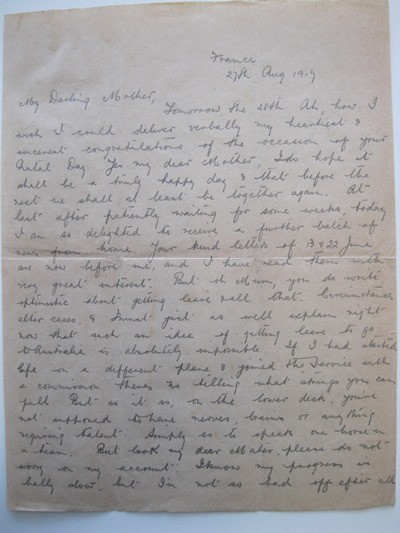
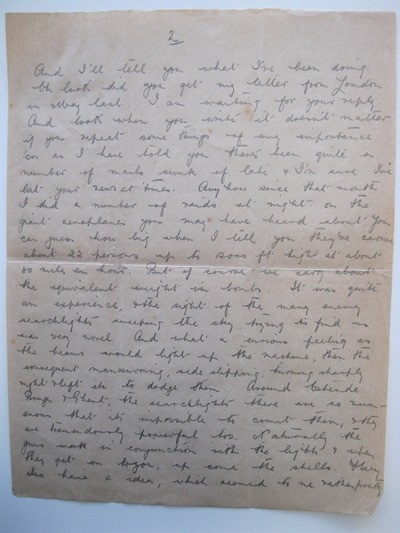
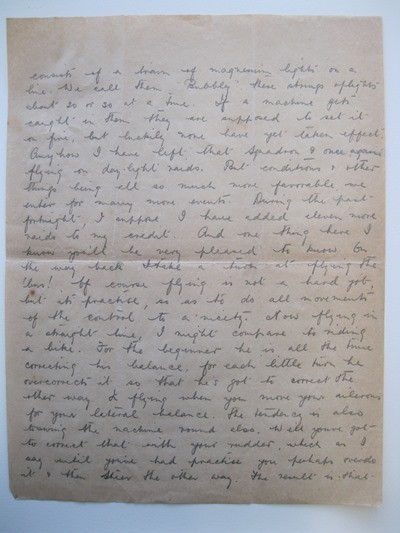
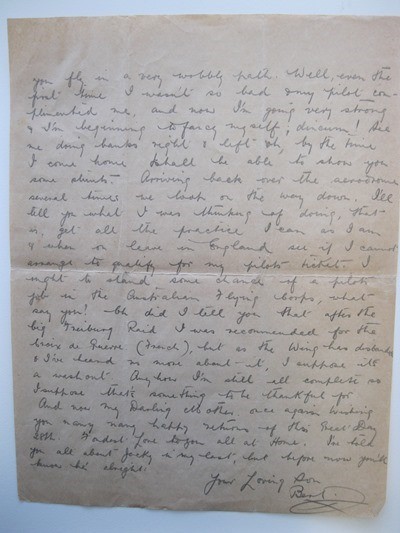
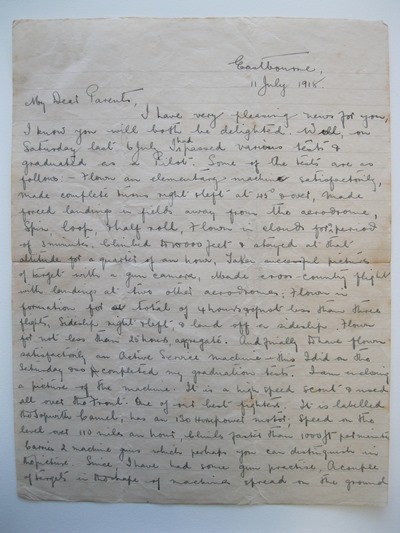
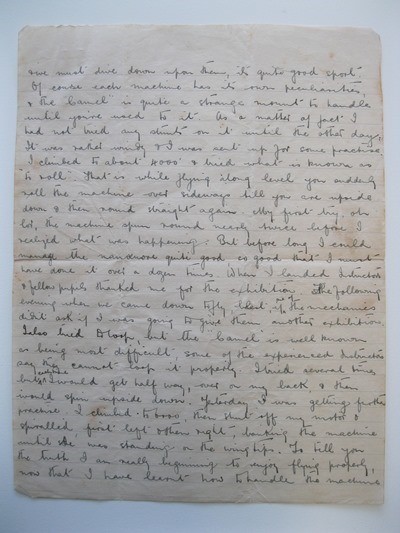
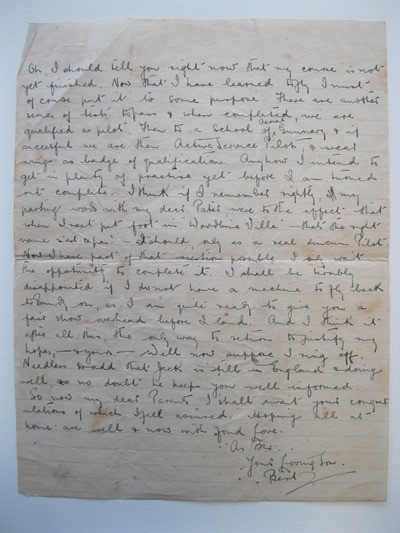
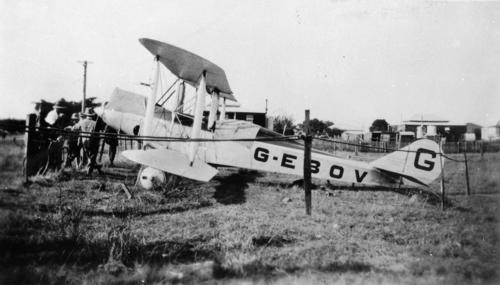
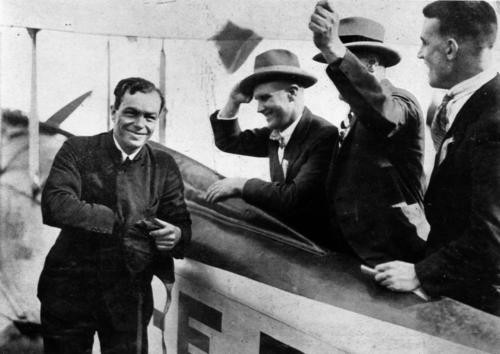
Bert Hinkler alighting from his plane after his successful 1928 solo flight from England to Australia. John Oxley Library, Negative No. 65644
Hinkler is buried in Florence. He was accorded a state funeral with full military honours ordered by Italian Prime Minister Benito Mussolini on 1 May 1933. Thousands lined the streets of Florence in tribute.
The Bert Hinkler Papers (OM 68-24) and the Hinkler Ring Posters may be viewed at the John Oxley Library.
Lynn Meyers, QANZAC 100 Content Curator and Guest Blogger, Kevin Lindeberg
Comments
Your email address will not be published.
We welcome relevant, respectful comments.